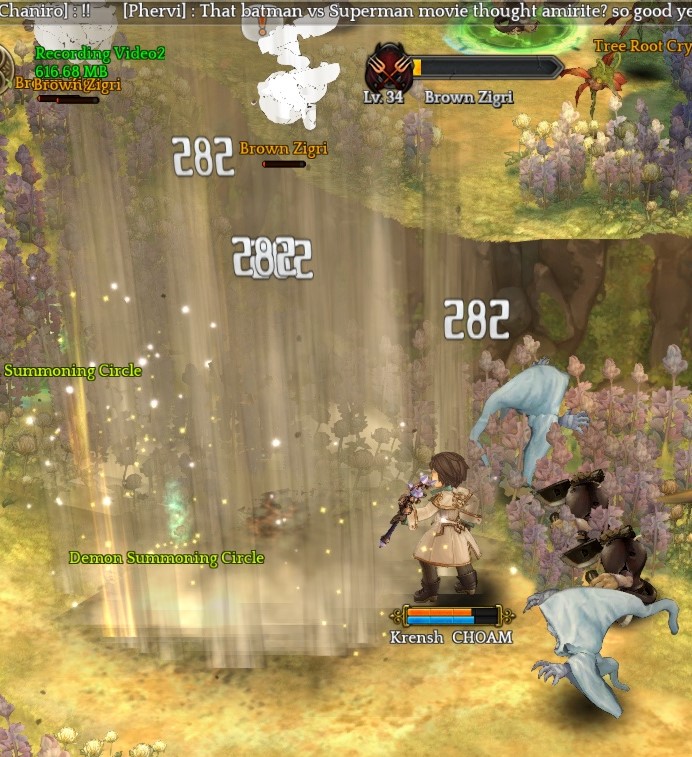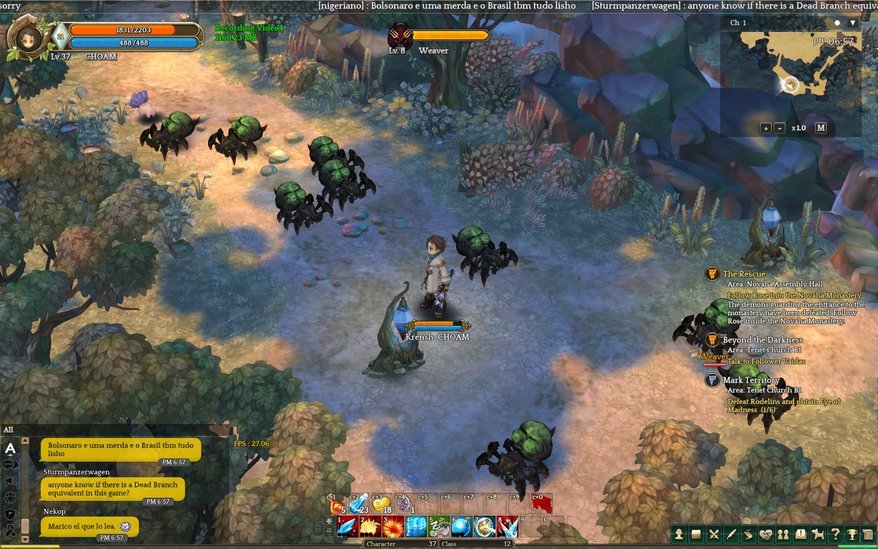What other MMOs need to learn from Tree of Savior’s dramatic combat

When I first leveled my frost mage in World of Warcraft, a typical fight consisted of frost bolt, frost bolt, frost bolt, monster dead, target new monster, bolt, bolt, bolt, and so on, pretty much forever. In Tree of Savior, a new MMORPG by IMC Games in Korea, I went in with similar spammy expectations when it came to leveling my cryomancer, but was pleasantly surprised to find a far more exciting combat system—one which a lot of other MMOs would do well to learn from.
A typical encounter in Tree of Savior goes something like: Aggro five enemies, ice bolt, run, ice wall, ice bolt, run, earthquake, watch my enemies explode into a million pieces as the earth launches them into orbit. Seriously, sending monsters careening through the sky and then seeing them explode feels awesome when you’re only level seven. Another early fight had me running from a monster the size of a house. After dodging and kiting to stay alive for several minutes, my final blow caused it to burst into money. I hadn’t even hit level 10.

Design rule: Big damage numbers are more fun.
In my experience with mages in RPGs, they generally start with some long range, high damage spells and methodically move from target to target. That suits me fine, as I enjoy being as far from harm as possible in both life and games. On paper, my cryomancer operates in a very similar fashion to other wizards I’ve played. (Sidenote: designers everywhere seem to agree that “frost” means “crowd control”, but fire and other elements don’t. Have you ever tried to move normally with a second degree burn? Fire mages should get slow/stun options as well. But I digress...)
Leveling through combat in Tree of Savior feels exciting thanks to the way several mechanics work in combination. First of all, most of the areas I ended up in had a high number of enemies. This created an action RPG feeling of being up against a horde, rather than picking off mobs in manageable numbers that were dotted around a space large enough to ensure you could reliably pull one or two at a time. Not so here. In Tree of Savior, generally if you need to kill one enemy, you need to kill six. Or 10.
Another important factor is Mana regeneration, which in Tree of Savior has been glacial so far. (I am currently level 37 with 12 class levels in cryomancer.) Asking other players, it seems that at the beginning of the game, chugging mana potions is essential. Apparently, when you’re closer to the end game, your character’s stats will have increased enough to make this a non-issue. Ten hours in, however, my scarce resources mean combat is interesting because I need to choose fights carefully.
Mana thirst
As a mage in these parts, one cannot fight every enemy. Even if you want to, you’d just run out of mana and potions and end up taking much longer to level in the long run. So when quests require you to pick up X objects in an area, it’s important to weigh whether you can get in and grab the item before taking damage, or whether you need to kill a few groups of enemies first. It’s the kind of call I never needed to make whilst leveling my frost mage in WoW.
Perhaps most importantly, the offensive abilities in Tree of Savior make for dynamic battles that reward quick thinking and tactics. I’m just beginning to scratch the surface of what the game has to offer in this regard, but it’s already a lot of fun. My cryomancer can throw up an ice wall which damages and freezes enemies, drastically improving my ability to kite. It will also serve as an important tool to combine with other abilities as I advance through the classes. Tree of Savior has 80 of these, although you’re required to go through leveling trees. Skills, like ice wall, that you learn early on, will impact what I can do later.
Keep up to date with the most important stories and the best deals, as picked by the PC Gamer team.
To give an example, I started out as a scrub wizard, and then had the option to take more levels in wizard, or move up to cryomancer or pyromancer. From there, I can take more levels in wizard or cryomancer, or switch again to Psychokino or Linker. Pyschokino is a psychic-flavored mage class that specializes in telekinesis—one of its abilities takes enemies and lines them up for you; another allows you to swap places with them. In combination with other abilities, like the ice wall mentioned earlier, this creates a ton of combo potential and gives me more control over monster positioning than usually found in MMORPGs. Other classes in the game deal with traps, totems, or even changing the size of different body parts (both allies and enemies).
The damage numbers which pop are huge, the screen shakes, and enemies explode
The biggest lesson for other MMOs to take from Tree of Savior’s meaty combat is that when you do kill an enemy, the feedback is delicious. The damage numbers which pop are huge, the screen shakes, and enemies explode into bits in a way that’s satisfying without being gruesome. It makes you feel powerful and heroic. The anime flavor of the game’s art, and the punchy soundtrack add substantially to the feeling of dynamism. The music, rather than a soaring orchestra, usually has a much faster pace and sounds more like rock, not unlike Tree of Savior’s spiritual predecessor, Ragnarok Online.
Playing the game so far has actually felt like being an anime protagonist in a show that would have aired on Toonami—it’s a long string of battles against a ton of jerks set to a peppy soundtrack. Of course, gobs of enemies, flashy abilities, limited resources, and isometric anime aesthetics, taken in isolation, don’t necessarily scream must-play MMO. And individually, other games still do these elements better. But taken together, Tree of Savior is unique. Especially the combat, which is so often a chore in MMOs, but here feels like the best part of the game.
Tree of Savior is currently available on Steam, but requires the purchase of a DLC pack to play. All servers will become free to play at the end of April if you want to dive in and see what the fuss is about for yourself.


